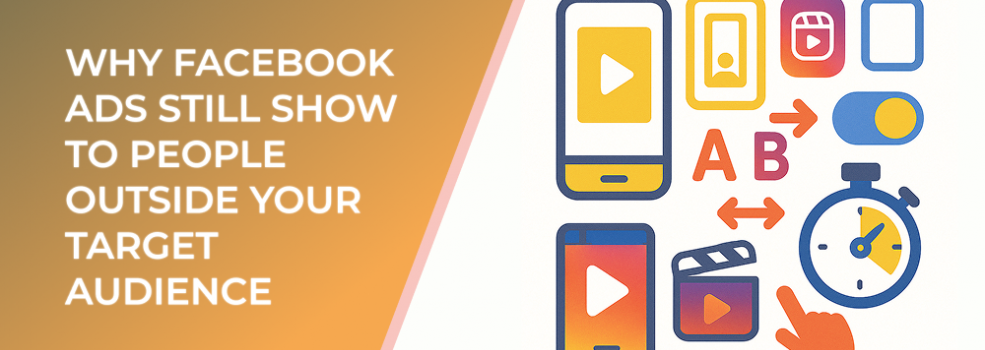Reels and Stories are both full‑screen vertical placements, but they behave differently. Reels sits in a lean‑back discovery feed with algorithmic distribution; Stories lives in a friend‑centric, tap‑through environment. Picking the right one comes down to intent, creative fit, and measurement. This guide outlines when to favor each placement, the stats to benchmark, and a testing plan you can run with LeadEnforce.
Reels vs. Stories at a Glance
| Dimension | Reels Ads | Stories Ads |
|---|---|---|
| User Mindset | Discovery/entertainment | Catching up with people/brands |
| Session Flow | Continuous scroll; sound‑on bias | Rapid tap‑through; mixed sound |
| Best Creative | Native video, motion hooks in 1s, editorial pacing | Short, direct, offer or UGC cutdowns |
| Typical Objectives | Prospecting, reach, video views, top‑funnel sales | Mid‑funnel reminders, promos, launches |
| Frequency Pattern | Lower frequency, broader reach | Higher frequency in smaller pools |
When Reels Outperforms Stories
-
Novel or visual products where a quick demo/transition “sells” the benefit.
-
Creator‑style UGC with voiceover, captions, and jump cuts; sound‑on rates tend to be higher in Reels.
-
Prospecting at scale: algorithmic distribution can surface new audiences efficiently when creative lands.
-
Engagement signals (saves/shares) matter—Reels often earns more of them, which can lift CTR by +10–25% vs. Stories when creative is native to the format.
When Stories Outperforms Reels
-
Time‑sensitive offers (sales, drops) needing direct CTAs and price clarity.
-
Mid‑funnel retargeting where audiences recognize the brand and need a concise nudge.
-
Static + lightweight video variants that communicate in under 5–7 seconds.
-
Brands with strong swipe‑up behavior (or CTA button taps) from previous campaigns.
Useful Benchmarks to Start With
(Your results will vary; use these as directional guardrails for first tests.)
-
CPM: Reels often 5–15% lower than Stories in many geos during non‑peak periods.
-
CTR (Link): Reels +10–25% vs. Stories when using creator‑style video; parity or Stories lead for static/offer creatives.
-
3‑Second Hold Rate: Reels ≥ 70% target on strong hooks; Stories ≥ 60%.
-
ThruPlay/Video Completion (15s): Reels 30–45%, Stories 25–40% for comparable edits.
-
Sound‑On Rate: Reels ≥ 70%; Stories 50–65% depending on audience.
-
CPA/ROAS: Treat as tie‑breaker—scale the placement that sustains CPA within ±15% of target for 2+ weeks.
Creative Blueprints
Reels
-
Hook in ≤ 1 second (motion, transformation, bold framing).
-
Voiceover or captions; keep subtitles large with contrast.
-
9:16 vertical, safe margins; native pacing (jump cuts, camera moves).
-
CTA appears in‑video by second 2–3 and again at end card.
Stories
-
Front‑loaded value: price, benefit, or offer in first frame.
-
Use 3–5 frame sequences (e.g., problem → proof → offer).
-
Static + motion accents acceptable; crisp CTA button area.
-
Keep each frame under 2 seconds of reading time.
Testing Framework (Clean and Comparable)
-
Separate ad sets: one for Reels, one for Stories. Same geo, budget, optimization event, and attribution window.
-
Creative parity: produce sibling edits—one Reels‑native, one Stories‑native—from the same concept.
-
Volume guardrail: aim for ≥ 50 purchases/week (or ≥ 100 SQLs/month) before calling a winner.
-
Frequency caps: keep prospecting ≤ 6–8 / 7 days; retargeting ≤ 8–12 / 7 days.
-
Read the right metrics: hook rate (3‑s holds), CTR, CPC, CPA/ROAS, save/share rate (leading indicator for Reels).
LeadEnforce Workflow
-
Audience hygiene: normalize identifiers, SHA‑256 hash, and deduplicate before syncing.
-
Segmentation: create mutually exclusive pools (prospecting, engaged, cart/lead, buyers) to prevent overlap across Reels and Stories.
-
Creative mapping: tag each concept with
ConceptID_Placement; track per‑placement KPIs. -
Automations: weekly refresh for seeds and suppressions (recent buyers, refunds, employees/test accounts).
-
Reporting: monitor placement‑level CPM, CTR, hold rate, and CPA; reallocate budgets every 7 days.
30/60/90‑Day Plan
Days 0–30
-
Launch split test with 2–3 paired concepts (Reels vs. Stories).
-
Validate conversion events and attribution windows.
Days 31–60
-
Scale the winner if CPA within ±15% of target and hold rate/CTR beat the other placement.
-
Add 2–3 new concepts; expand to adjacent geos/languages.
Days 61–90
-
Introduce layered retargeting (0–7 / 8–30 / 31–60 days).
-
Build a weekly creative rotation; archive winners and reskin angles.
Troubleshooting
-
High CTR, low CVR: curiosity clicks—tighten offer clarity, align landing page.
-
Flat delivery: raise budgets in ≤ 30% steps, widen similarity tiers, ensure learning volume.
-
Creative fatigue: frequency rising + CTR down > 25%—rotate new cuts, vary openers.
Suggested Reads from the LeadEnforce Blog
-
When Instagram Explore Ads Deliver Better Results Than Feed Ads
-
Retargeting Without Waste: Exclusions, Frequency Caps, and Creative Rotation
-
Lookalike Audiences: How to Seed, Train, and Scale
Takeaway
Choose Reels for discovery‑led prospecting and creator‑style storytelling; choose Stories for time‑sensitive offers and mid‑funnel nudges. Use disciplined tests, benchmark the right metrics, and scale the placement that sustains target CPA with healthy engagement. LeadEnforce helps you keep audiences clean, creatives organized, and budgets pointed at what truly works.

